Introduction
Are Parakeets Parrots: The world of avian companions is diverse and intriguing, with a wide array of bird species captivating enthusiasts and pet owners alike. Among the fascinating feathered friends in this realm are parakeets, often referred to as budgerigars or simply budgies, and parrots. However, the question that often arises is whether parakeets are a type of parrot. In this exploration, we’ll dive into the intriguing world of these feathered wonders to understand their relationship and differences.
Parakeets, with their vibrant plumage and delightful personalities, have captured the hearts of bird enthusiasts for generations. Known for their small size and cheerful chirping, they are a beloved choice for those considering a pet bird. Parrots, on the other hand, encompass a diverse group of birds renowned for their striking colors, intelligence, and the ability to mimic sounds. They range from the diminutive parrotlets to the majestic macaws.
To unravel the question of whether parakeets parrots, we’ll delve into their shared characteristics and distinctive features. Understanding their taxonomy, behaviors, and anatomical traits will shed light on their classification within the avian family tree.
By exploring these aspects, we aim to provide clarity on the intriguing relationship between parakeets and parrots, uncovering what sets them apart and what binds them together.
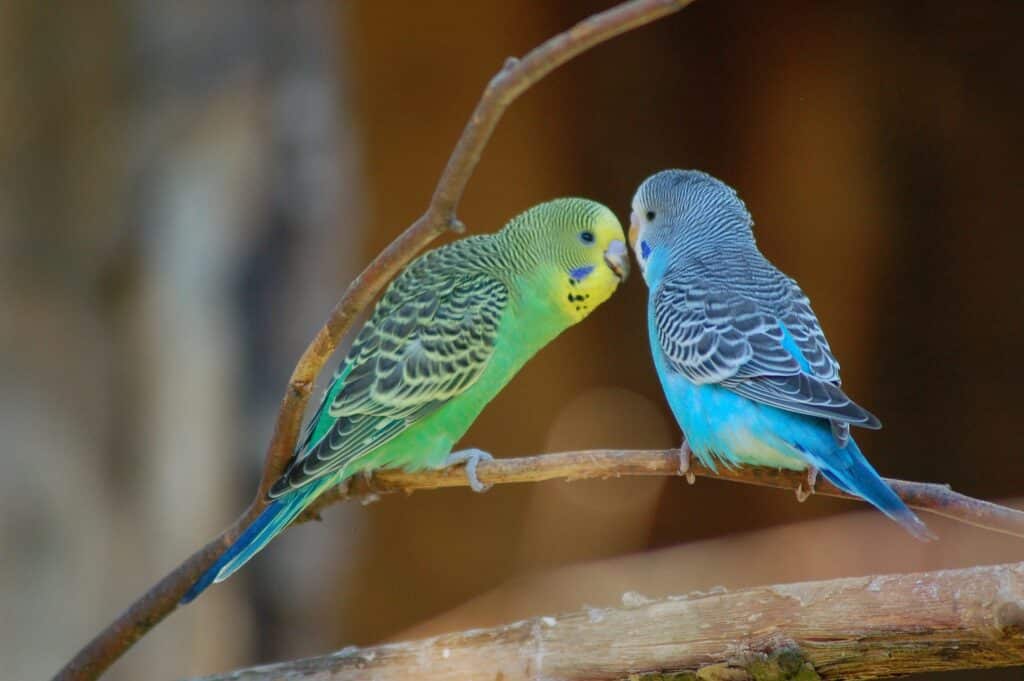
Is a parakeet and a parrot the same bird?
Parakeets are one of the smallest species in the parrot family, which is the key difference that sets them apart. Parrots comprise over 350 unusual species that vary in size, coloring, and physical appearance. Parakeets are also called budgerigars or budgies, and there are fifteen unique species.
No, a parakeet and a parrot are not the same bird, but parakeets belong to the parrot family. Parakeets are a specific subgroup within the parrot family known for their small size, long tail feathers, and friendly disposition. They are scientifically classified as Psittaculidae, which is a family of small to medium-sized parrots. Parrots, on the other hand, are a diverse group of birds that belong to the family Psittacidae. This family includes a wide range of parrot species, from the small parrotlets to the large and colorful macaws.
While parakeets are parrots, the term “parakeet” is often used to refer to the smaller parrot species, especially those with long tails and slender bodies. The term “parrot” is more general and encompasses a broader range of parrot species with various sizes, colors, and characteristics. So, in summary, parakeets are a type of parrot, but not all parrots are parakeets.
Are parakeets small parrots?
parakeet, also spelled Parrakeet, any of numerous seed-eating parrots of small size, slender build, and long, tapering tail. In this sense the name is given to some 115 species in 30 genera of the subfamily Psittacinae (family Psittacidae) and has influenced another parrot name, lorikeet (see parrot).
Yes, parakeets are small parrots. The term “parakeet” is often used to refer to small to medium-sized parrot species, especially those with slender bodies, long tails, and a relatively small overall size compared to larger parrot species.
Parakeets belong to the family Psittacidae, which is the scientific classification for true parrots. While the name “parakeet” is sometimes used to describe specific species, it is more commonly used as a general term for various smaller parrot species. Some well-known examples of parakeets include the budgerigar (budgie), the Indian Ringneck Parakeet, and the Monk Parakeet.
These smaller parrots share many characteristics with their larger parrot relatives, such as their curved beaks, zygodactyl feet (two toes pointing forward and two pointing backward), and the ability to mimic sounds to varying degrees. While they are smaller in size compared to macaws, cockatoos, and some other large parrot species, parakeets exhibit the traits and behaviors that are typical of parrots.
In summary, parakeets are indeed small parrots, and the term “parakeet” is often used broadly to describe a range of smaller parrot species with certain physical and behavioral characteristics.
What is another name for a parakeet?
The birds that we commonly call “parakeets” in the United States are known as budgerigars or budgies to the rest of the world. While some may claim that Parakeets and Budgies are not the same, their taxonomy is precisely the same.
Another common name for a parakeet is “budgerigar” or “budgie” for short. Budgerigars are a specific species of parakeet known for their small size, vibrant colors, and playful personalities. They are one of the most popular pet birds worldwide and are often referred to as budgies in casual conversation. The term “parakeet” is a more general name that can refer to various species of small parrots with similar characteristics.
Is a budgie a true parrot?
The true parrots include many of the familiar parrots including macaws, conures, lorikeets, eclectus, Amazon parrots, grey parrot, and budgerigar. Most true parrots are colourful and flighted, with a few notable exceptions.
Yes, a budgie, also known as a budgerigar or simply “budgie,” is indeed a true parrot. Budgerigars belong to the family Psittacidae, which is the scientific classification for true parrots. They are a small parrot species known for their vibrant plumage, playful personalities, and the ability to mimic sounds, although their vocal abilities are not as advanced as some larger parrot species.
Budgerigars are among the most popular pet birds worldwide due to their small size, cheerful disposition, and ease of care. While they are smaller in size compared to many other parrot species, they exhibit many of the typical characteristics of parrots, such as their curved beaks, zygodactyl feet (two toes pointing forward and two pointing backward), and the ability to imitate sounds.
In summary, budgerigars are a true species of parrot within the parrot family (Psittacidae) and share many traits with their larger parrot relatives.
Is parakeet better than parrots?
Parakeets are said to be more affectionate than parrots. They can easily develop a deep bond with their humans. Both parrots and parakeets are energetic and social birds.
Whether a parakeet is better than a parrot or vice versa depends on individual preferences, living circumstances, and the level of commitment one is willing to make as a pet owner. Both parakeets and parrots have their unique characteristics and advantages.
Parakeets, also known as budgerigars or budgies, are often considered better for novice bird owners or those with limited space. They are smaller in size, which means they require less room and can adapt well to smaller living spaces. Parakeets are generally less expensive to purchase and maintain than larger parrot species. They are also known for their cheerful and social nature, making them great companions for people who want interactive and engaging pets.
On the other hand, parrots come in a wide range of sizes and personalities. While some parrot species can be more challenging to care for due to their larger size and higher intelligence, they can also be incredibly rewarding as companions. Many parrot species are known for their ability to mimic sounds and talk, making them excellent conversation partners. However, parrots require more space, social interaction, and mental stimulation than parakeets, and their long lifespans mean a long-term commitment.
Ultimately, whether a parakeet or a parrot is better for an individual depends on their lifestyle, experience, and personal preferences. It’s essential to research and consider the specific needs and characteristics of the bird species to determine which one aligns better with your situation.
Why are parrots called parakeets?
The word “parakeet” is a descriptive term that refers to the long tails of these types of birds. There are many different kinds of parakeets available in the pet trade. They include such diverse species as: Indian Ringneck Parakeets.
The use of the term “parakeet” to describe smaller parrot species can be traced back to historical and linguistic origins. The word “parakeet” is believed to have its roots in the French language, where “perroquet” referred to parrots in general. When Europeans began exploring and documenting various bird species, they encountered parrots of different sizes and shapes, including the smaller parrot species that we now commonly refer to as parakeets.
As these explorers and naturalists encountered these smaller parrot species, they recognized that they shared many characteristics with their larger parrot relatives, such as their distinctive beaks, vibrant plumage, and vocal abilities. However, the smaller parrots had their unique features, such as their slimmer build and longer tails, which distinguished them from the larger parrot species.
Over time, the term “parakeet” came to be associated with these smaller parrot species, serving as a convenient way to categorize and differentiate them within the broader parrot family. This naming convention has persisted to this day, and it is widely accepted in the world of ornithology and aviculture (the keeping of birds as pets).
In essence, while the term “parakeet” might seem like a distinct category of birds, it is fundamentally rooted in the broader classification of parrots. Therefore, when we refer to parakeets, we are essentially talking about a subset of parrot species known for their smaller size and unique characteristics.
Why are parakeets called lovebirds?
Lovebirds are budgies that enjoy each other’s company and have a lively character. Each one of them chooses a partner to stay with for life, which is why they are called lovebirds.
Parakeets are not typically referred to as “lovebirds.” The term “lovebirds” specifically refers to a group of small parrot species belonging to the genus Agapornis. These birds are known for their strong pair bonds and affectionate behaviors towards their mates, which is why they are called “lovebirds.”
Lovebirds are characterized by their small size, vibrant plumage, and their tendency to form deep and lasting bonds with a single mate. They are often seen sitting closely together, preening each other, and even feeding each other as signs of their affection. Lovebirds are known for their playful and charming personalities, making them popular pets among bird enthusiasts.
Parakeets, on the other hand, are a diverse group of parrot species that belong to different genera, such as Melopsittacus for the budgerigar (commonly known as the budgie) or Psittacula for the Indian Ringneck Parakeet. While parakeets can also be affectionate and social with their human caregivers, they are not typically referred to as “lovebirds” because the term is reserved for the specific genus Agapornis.
In summary, the term “lovebirds” is used exclusively for a particular group of small parrot species known for their affectionate behaviors and strong pair bonds, while parakeets are a broader category of parrot species with various characteristics and behaviors.
What does parakeet eat?
They feed on seeding grasses far more than large parrots. In the wild they also eat fruit, nectar from flowers, insects and their larvae. And like the larger parrot species, they’ll also eat tree seeds, fruits, berries, buds and bark.
Parakeets have specific dietary requirements to ensure their health and well-being. Their diet typically consists of:
High-Quality Parakeet Pellets: These are specially formulated commercial pellets that provide essential nutrients, vitamins, and minerals. They should make up the primary part of a parakeet’s diet.
Fresh Fruits: Parakeets enjoy a variety of fresh fruits such as apples, bananas, strawberries, and oranges. These provide vitamins and natural sugars.
Fresh Vegetables: Leafy greens like spinach and kale, as well as vegetables like carrots and bell peppers, offer essential vitamins and minerals.
Seeds (in Moderation): While seeds can be included in their diet, they should not be the primary food source due to their high-fat content. Limit seeds as treats.
Clean Water: Fresh and clean water should always be available to keep parakeets properly hydrated.
Occasional Treats: Parakeets can enjoy occasional treats like millet sprays or small amounts of nuts and whole grains.
It’s important to provide a balanced diet and ensure dietary diversity to meet all their nutritional needs. Monitoring their food intake and providing fresh food daily is essential to their health. Avoid offering foods that are toxic to birds, such as chocolate, avocado, and alcohol.
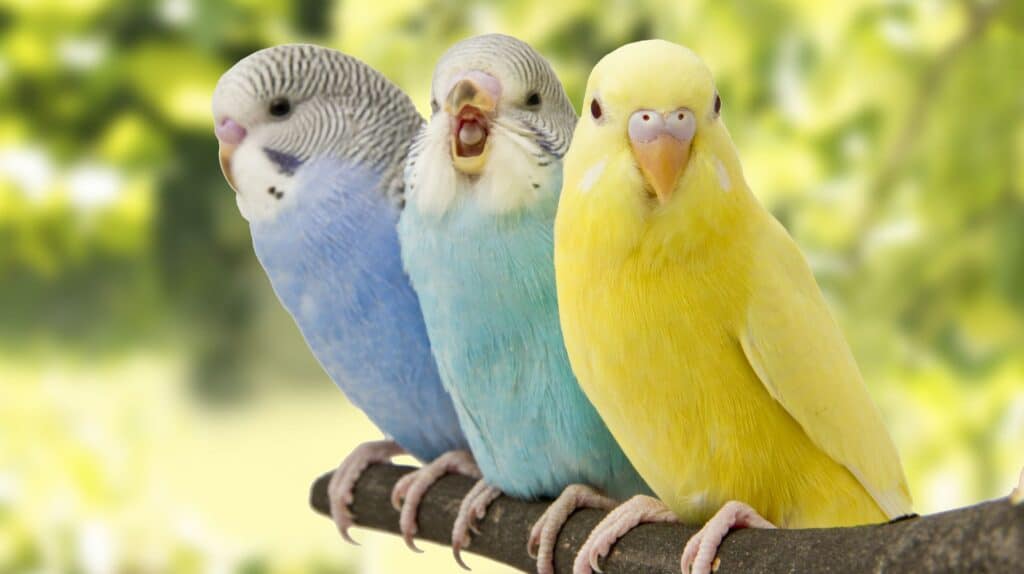
Conclusion
In the captivating realm of avian diversity, parakeets stand as distinct yet closely related members of the parrot family. While they share many characteristics with their larger parrot counterparts, such as their hooked bills and zygodactyl feet, parakeets have evolved unique traits and features that set them apart.
Parakeets, also known as budgerigars or budgies, are characterized by their small size, vibrant plumage, and cheerful personalities. They belong to the family Psittaculidae, which includes other parrot species. Despite their diminutive stature, parakeets family exhibit many parrot-like behaviors, such as the ability to mimic sounds and their social nature.
Parrots, on the other hand, encompass a wide variety of species, from the small parrotlets to the majestic macaws. They share common traits such as intelligence, strong beaks, and the ability to vocalize. These traits, along with their colorful plumage, are some of the defining features of parrots.
While parakeets are a distinct subgroup within the parrot family, they are indeed parrots. Their unique characteristics and endearing qualities make them a beloved choice for bird enthusiasts and pet owners around the world. Understanding their classification and shared traits with other parrot species enhances our appreciation for these charming feathered companions.

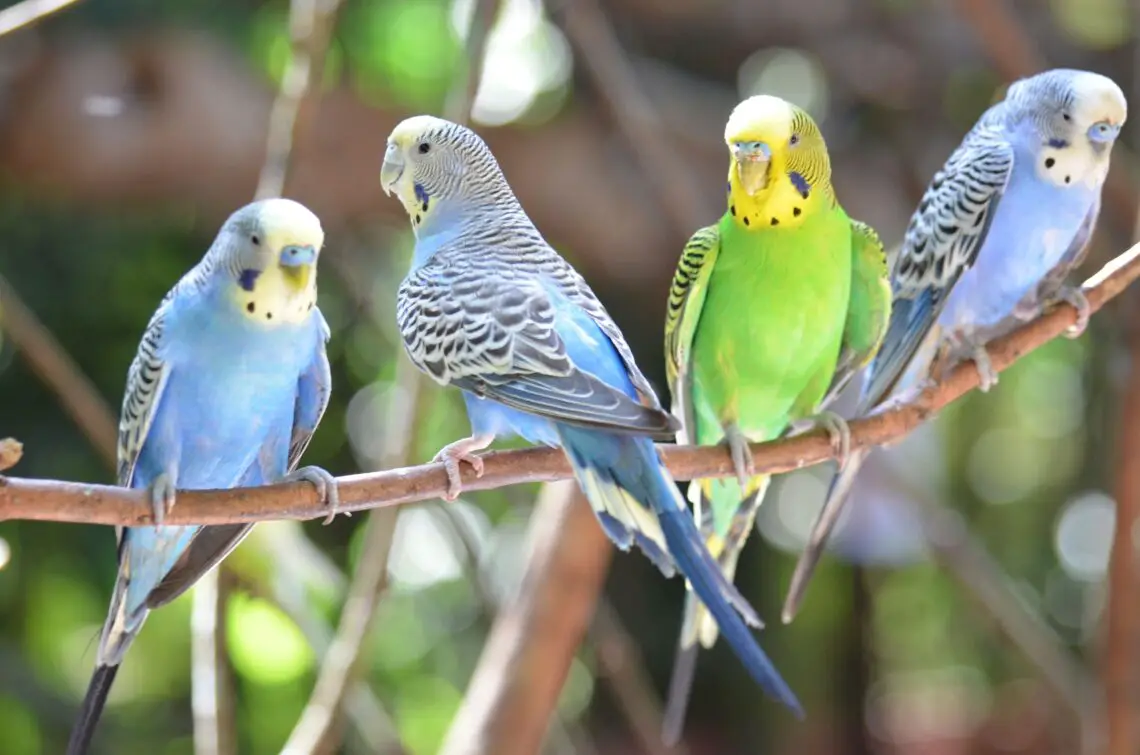
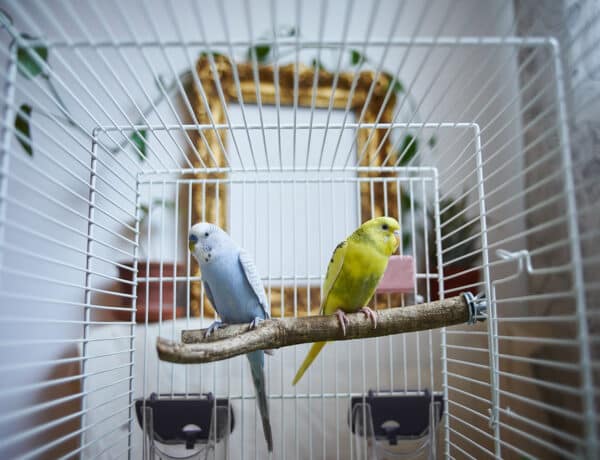
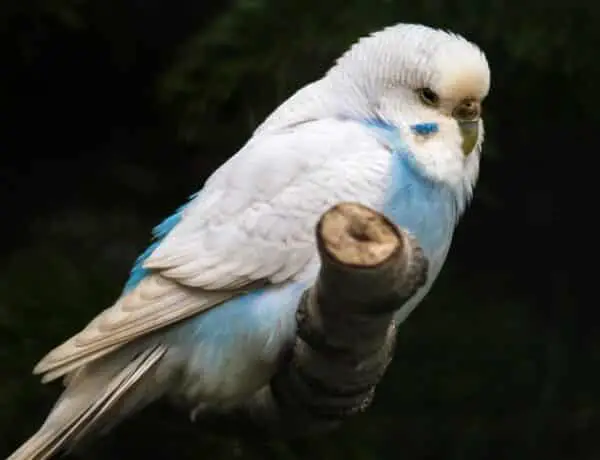
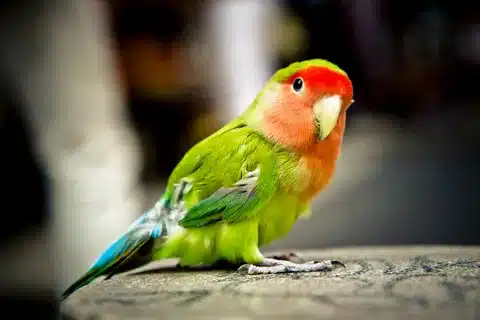
No Comments